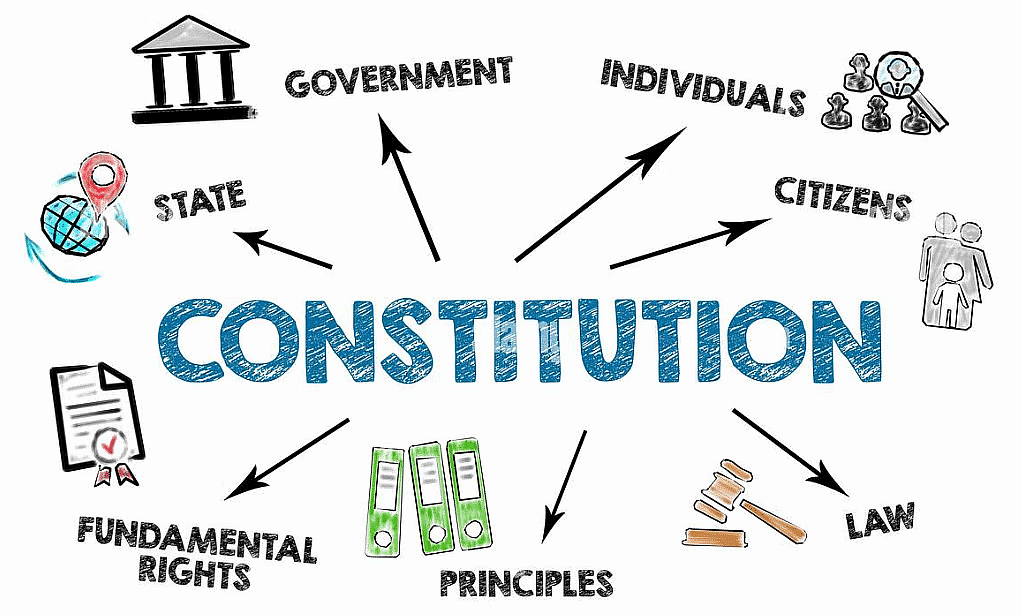Revision Notes: Constitution as a living document | Political Science Class 11 - Humanities/Arts PDF Download
Overview
The concept of the Constitution as a living document, as discussed in the chapter, refers to the idea that the Constitution is adaptable and responsive to changing societal needs, values, and circumstances over time. This perspective views the Constitution not as static or rigid but as dynamic, capable of evolving through interpretation, amendment, and judicial review to address contemporary challenges and reflect the evolving aspirations of the people.

Adoption and Implementation: The Constitution of India was adopted on November 26, 1949, and its implementation commenced on January 26, 1950, marking the beginning of its functioning within the country's framework.
Sacred Document and Instrument of Change: The Indian Constitution embodies a dual nature, being both revered as a sacred document and recognized as an instrument adaptable to changing needs, thereby necessitating periodic amendments.
Combination of Characteristics: Our constitution blends flexibility and rigidity, where certain provisions can be amended through simple parliamentary majority, while others require a more stringent process involving a two-thirds majority of Parliament and state legislature ratification.
Amendment Provisions: Article 368 delineates the Parliament's constituent power, allowing for amendments via addition, variation, or repeal, subject to prescribed procedural requirements.
Types of Amendments: Amendments to the Constitution range from the anti-defection amendments, such as the 52nd and 91st, to significant changes like the lowering of the voting age to 18 through the 61st amendment, and the introduction of local self-government bodies via the 73rd and 74th amendments.
Living Constitution: The concept of a living constitution denotes its ability to evolve through judicial interpretation without altering its fundamental structure, as exemplified by the Supreme Court's rulings on reservations and the imposition of a 50% cap on quota allocations.
Basic Structure Doctrine: The landmark Keshavananda Bharati ruling in 1973 established the doctrine of the basic structure, guiding subsequent interpretations and affirming the constitution's resilience amidst societal changes.
Dynamic Nature: Despite numerous amendments, the Constitution remains effective due to its dynamic nature, accommodating evolving societal norms, values, and challenges while upholding democratic principles.
Enduring Legacy: As India celebrated the Constitution's 64th anniversary on January 26, 2014, its core principles remained unchanged, with amendments serving to clarify and enhance rather than fundamentally alter its essence.
Symbol of Democracy: The Constitution of India stands as a testament to democratic governance, embodying the principles of justice, equality, and liberty while demonstrating adaptability and responsiveness to the nation's evolving needs.
 Preamble to the Constitution of India
Preamble to the Constitution of India
|
44 videos|202 docs|40 tests
|
FAQs on Revision Notes: Constitution as a living document - Political Science Class 11 - Humanities/Arts
| 1. What does it mean for the Constitution to be a "living document"? |  |
| 2. How does the Constitution being a living document affect its interpretation? |  |
| 3. What are the advantages of viewing the Constitution as a living document? |  |
| 4. Are there any limitations to the concept of the Constitution as a living document? |  |
| 5. How does the idea of the Constitution as a living document impact the process of amending the Constitution? |  |

|
Explore Courses for Humanities/Arts exam
|

|

















